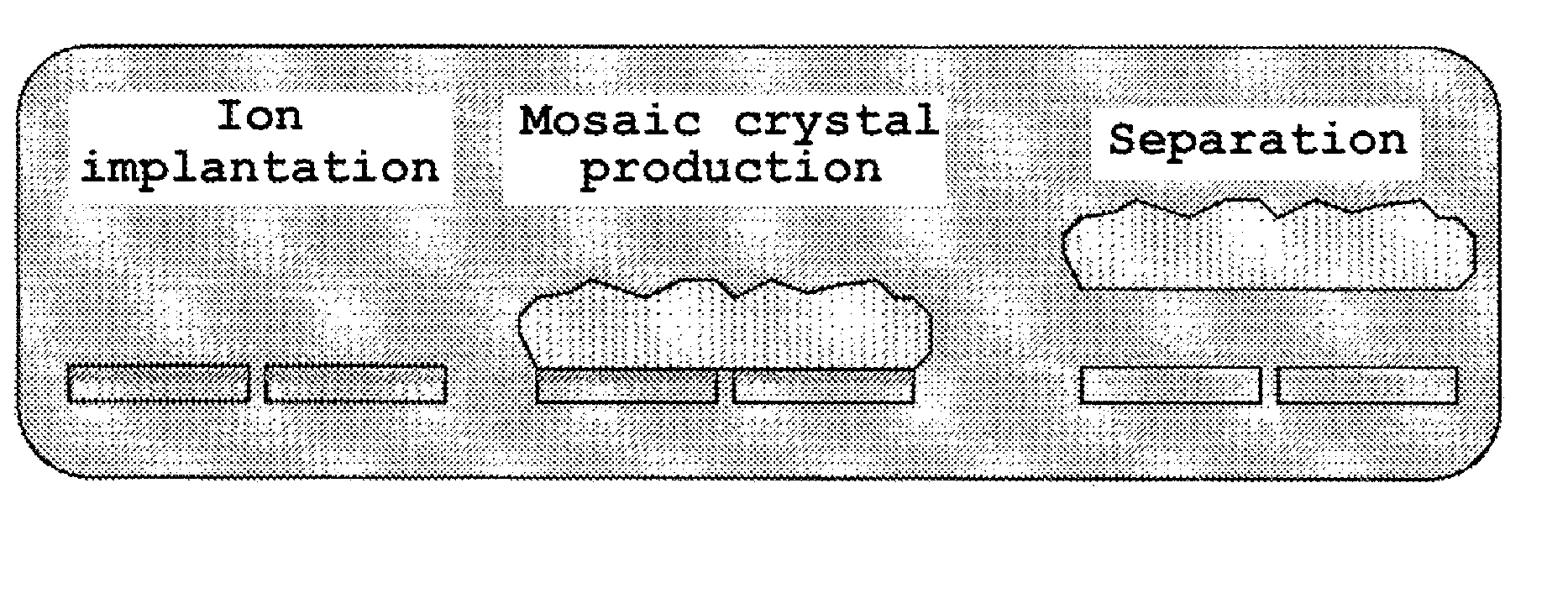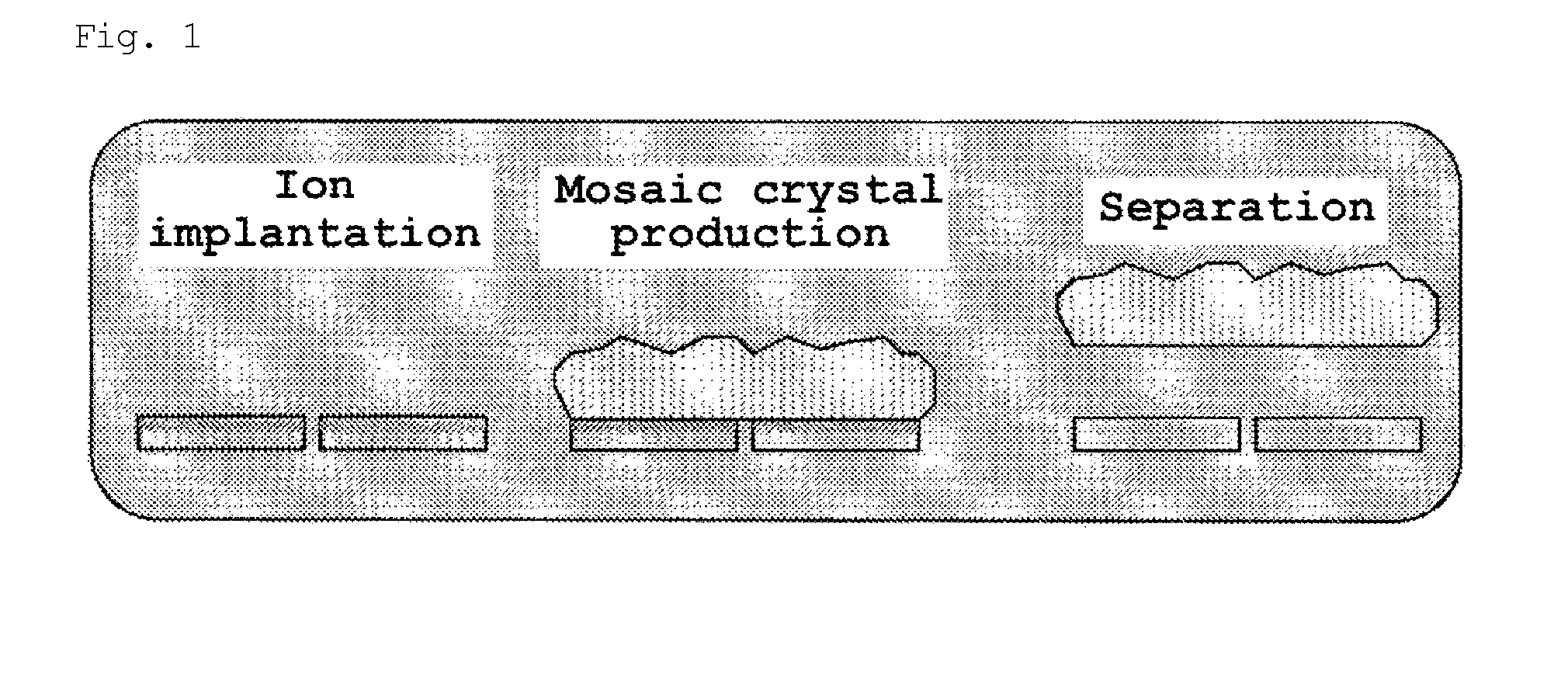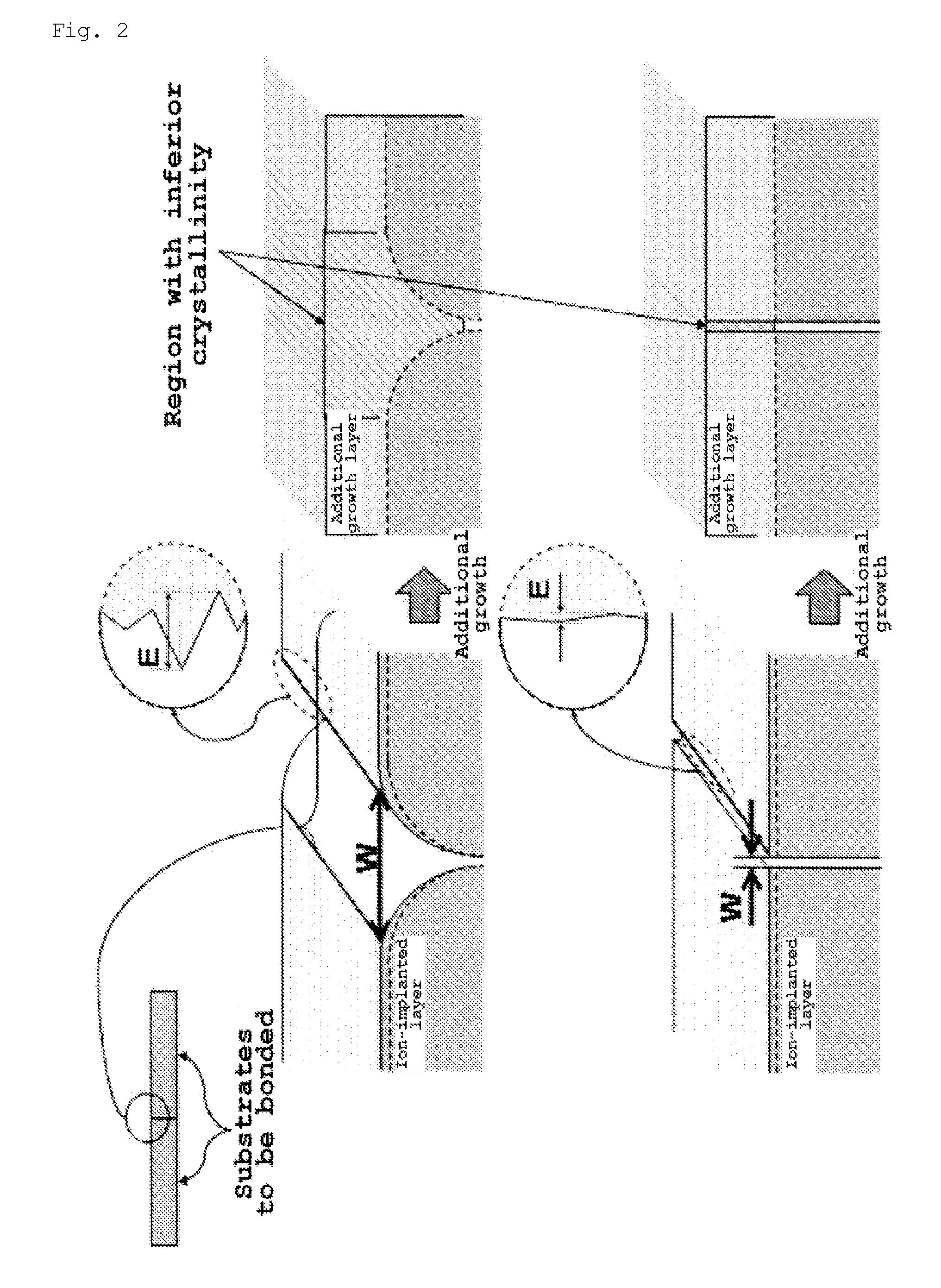Method for producing mosaic diamond
a production method and technology for mosaic diamonds, applied in the direction of crystal growth process, polycrystalline material growth, chemically reactive gases, etc., can solve the problems of inability to produce single crystal diamond substrates with a larger area, inability to easily increase the area of these substrates, and inability to produce single crystal diamond substrates with an area of about 55 mm or more, etc., to achieve a simple process and high production efficiency. , the effect of large quantity
- Summary
- Abstract
- Description
- Claims
- Application Information
AI Technical Summary
Benefits of technology
Problems solved by technology
Method used
Image
Examples
example 1
[0120]Two single-crystal diamond substrates, i.e., a single-crystal diamond (100) substrate with a size of 4.5×4.5 mm and a thickness of 339 μm, and a single-crystal diamond (100) substrate with a size of 4.5×4.5 mm and a thickness of 212 μm, were used as seed substrates, and a mosaic diamond was produced in the manner shown in FIG. 4.
[0121]First, the two aforementioned seed substrates were placed on an aluminum support, and carbon ions were implanted into the seed substrates at an implantation energy of 3 MeV and a dose of 2×1016 ions / cm2, using a 1.5-MV tandem accelerator. The calculated value of the ion implantation depth was about 1.6 μm. As a result of this irradiation, the color of the two diamond substrates changed from transparent to black; this confirmed that non-diamond layers had been formed.
[0122]Next, the two ion-implanted seed substrates were inverted on a flat supporting surface of a molybdenum support so that the ion-implanted faces came into contact with the support...
example 2
[0127]Two single-crystal diamond substrates, i.e., a single-crystal diamond (100) substrate with a size of 10×10 mm and a thickness of 304 μm, and a single-crystal diamond (100) substrate with a size of 10×10 mm and a thickness of 302 μm, were used as seed substrates, and a mosaic diamond was produced in the manner shown in FIG. 5.
[0128]First, the two aforementioned seed substrates were placed on an aluminum support, and carbon ions were implanted into the seed substrates at an implantation energy of 3 MeV and a dose of 2×1016 ions / cm2, using a 1.5-MV tandem accelerator. The calculated value of the ion implantation depth was about 1.6 μm. As a result of this irradiation, the color of the two diamond substrates changed from transparent to black; this confirmed that non-diamond layers had been formed.
[0129]Next, the two ion-implanted seed substrates were inverted on a flat supporting surface of a molybdenum support so that the ion-implanted faces came into contact with the support and...
PUM
 Login to View More
Login to View More Abstract
Description
Claims
Application Information
 Login to View More
Login to View More - R&D
- Intellectual Property
- Life Sciences
- Materials
- Tech Scout
- Unparalleled Data Quality
- Higher Quality Content
- 60% Fewer Hallucinations
Browse by: Latest US Patents, China's latest patents, Technical Efficacy Thesaurus, Application Domain, Technology Topic, Popular Technical Reports.
© 2025 PatSnap. All rights reserved.Legal|Privacy policy|Modern Slavery Act Transparency Statement|Sitemap|About US| Contact US: help@patsnap.com



